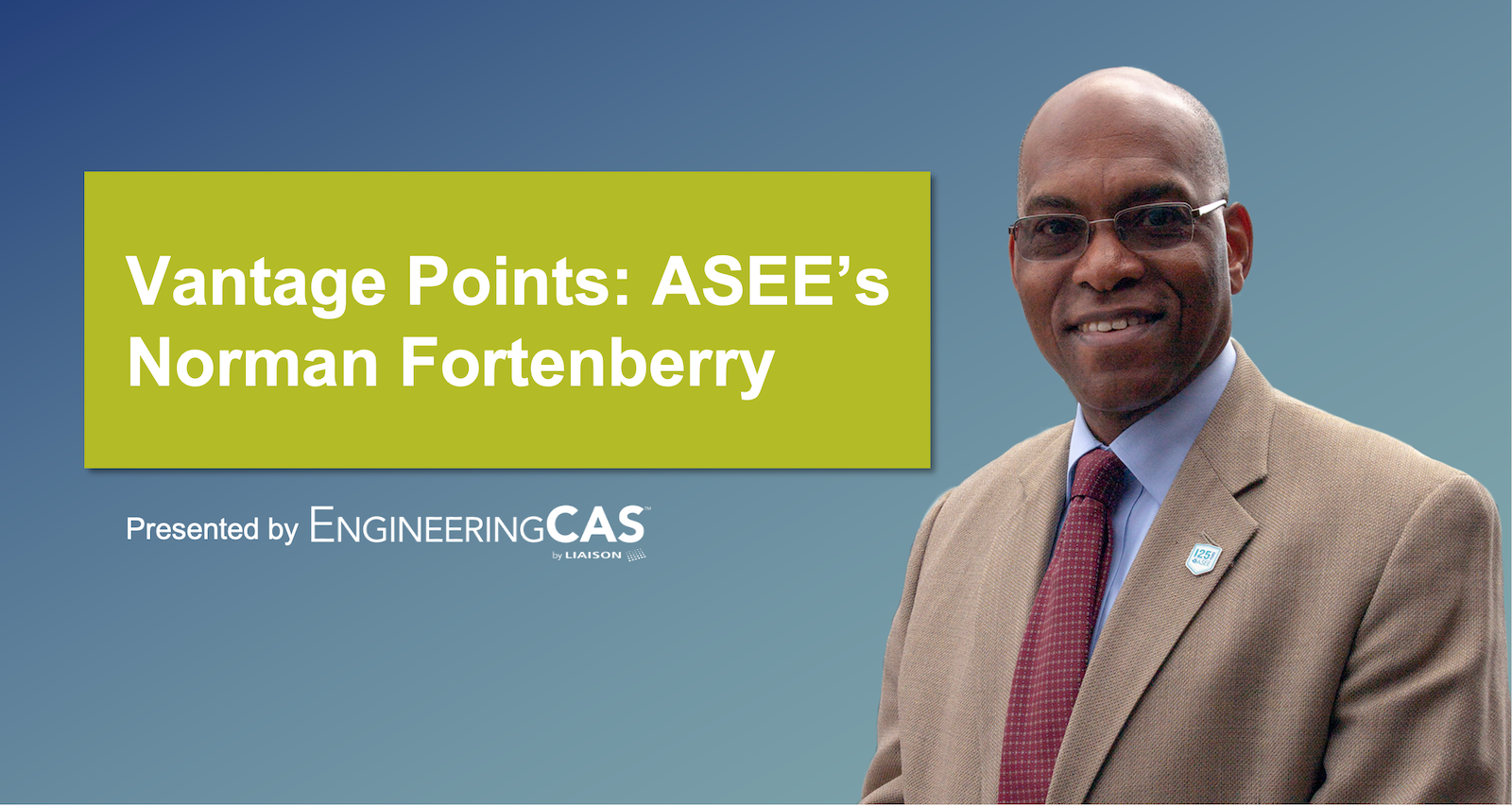Liaison’s new series of online discussions kicks off with Norman Fortenberry, Sc.D., Executive Director of the American Society for Engineering Education (ASEE).
Liaison’s EngineeringCAS recently launched a new series of online forums to help the graduate engineering community stay up to date on the most important trends shaping recruitment, enrollment, education and the profession as a whole.
The first installment — available on demand here — features a conversation between Norman Fortenberry, Sc.D., Executive Director of the American Society for Engineering Education (ASEE) and Ron Hyman, Managing Director of EngineeringCAS.
Advancing Innovation for Everyone
ASEE is a global society of institutional and corporate members that seeks to empower engineering students and professionals to create a better world. It does so by advancing innovation, excellence and access across all levels of education and the workforce.
In 2017, ASEE partnered with Liaison to launch EngineeringCAS, the first of its kind Centralized Application Service (CAS) for graduate engineering programs. EngineeringCAS helps prospective students discover more graduate programs in their field so that they can make more informed decisions about where they choose to study. For institutions, EngineeringCAS drives program awareness to expand applicant pools and eliminate the burdens of manual processing tasks.
“ASEE partners with Liaison on EngineeringCAS because it is integral for shaping the quality, variety and quantity of graduate engineering applicants,” Dr. Fortenberry recently said.

Reaching Out
During this conversation, Dr. Fortenberry shared his perspective on the future of engineering and addressed topics including students’ mental health, careers outside of academia and strategies for recruiting a more diverse engineering class. He talked about the importance of reengaging international students as travel restrictions lessen in the coming year (and how EngineeringCAS is helping institutions accomplish this), but noted the importance of finding best-fit students closer to home as well.
“We need to make sure that we are developing a base domestically that can help the United States maintain its global competitiveness,” Dr. Fortenberry said. “We need to make an effort to reach out and increase domestic student applications, especially from those populations that have been historically overlooked.”
How do we enroll these overlooked groups and ensure that we’re setting them up for success? “No one is successful purely on their own,” Dr. Fortenberry said. He explained that currently there is an implicit provision of support for certain students, that faculty will take these students to the right conferences, introduce them to the right people or help them publish papers in the right journals to name a few examples. “Making the implicit explicit [especially for women and underrepresented minorities] is a large part of what needs to happen once a student is within the institution.” These types of environmental factors will not only help to recruit a more diverse student body, they improve the pipeline from high school through college and on to career for everyone.
To hear the entire conversation, watch Vantage Points: ASEE’s Norman Fortenberry now. And stay tuned to learn more about the exciting guests we have lined up for the Vantage Points series!
